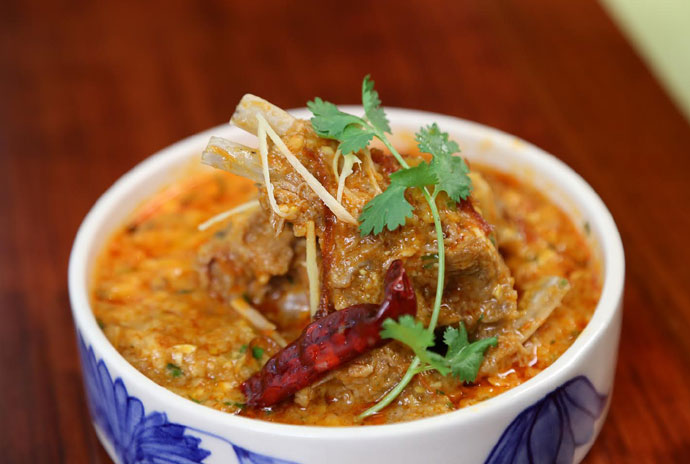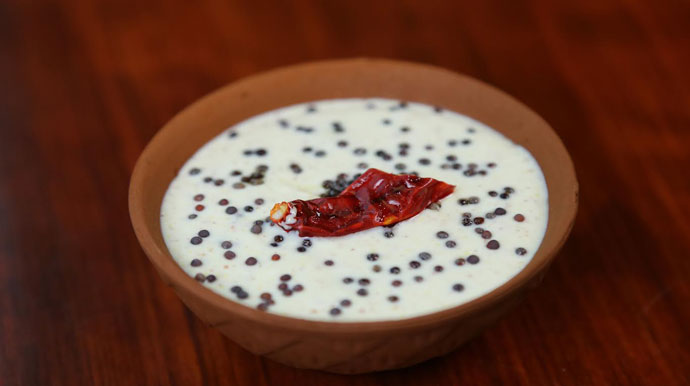When royal eating is healthy eating too

Royal repasts are royal. And a royal high table organised by ITC Maurya last week, that showcased delicacies from the kitchens of seven erstwhile princely states of India, namely Kangra, Sailana, Akheraj, Rampur, Bhainsorgarh, Salar Jung and Kashmir was exactly that. Regal and lavish!
But what impressed me more was the hidden healthy eating gems I gleaned off that high table.

Now, the general perception is that the meals favoured by the royals comprise of a waist-expanding and artery-clogging repertoire of curries, breads, desserts and more… And thus the logical presumption is that undoubtedly these excesses translate to unhealthy thalis, which but obviously deliver ill-health.
This was the first myth that was shattered as I sat enjoying my pick from the 100 or so dishes on offer during the royal high table. A few bites in and it was clear that for "these" royals food was not just a source of celebration but for sustenance too, the right way. Sweet surprise this!

Each table was almost like a mirror to a dynasty's culture, rich and intense, yet homely. Yes, homely.
No dish tasted like a hotel menu dish, in fact that personal bawarchi touch was apparent everywhere. And what also became clear instantly across all the cuisines was the fact that each one of them strongly believed in the "eat seasonal and only what is local" paradigm. Each cuisine offered distinct flavours, especially in the way they treat and cook their meats and vegetables and also the spices they favoured (some had their own secret spice mixes too which were lending distinct aromas and flavours), but preference to ingredients local to their region came across as an unwritten rule.

Whether it was Makki ka Soweta from Bhainsorgarh or the mustard-based raita from Kashmir… local and fresh ruled. And how! Now this route - of going local - that all modern nutritionists and food experts are now going ballistic world over - it seems is already been practiced in these royal kitchens - for eons now.
Every table had their own distinctive signatures. The Kashmir lineage represented by the Dogra cuisine showcased its gracious use of spices like cinnamon, cardamom, cloves, saffron as well as healthy techniques like fermentation and smoking of the ingredients.

Similarly Palda, a signature curd base curry from Kangra, home to Katoch dynasty considered to be oldest surviving royal family in the world, is a far healthier way to cook curries. The Sailana cuisine I found laced liberally with exotic spices, rose petals and sandalwood powder - all good for us ingredients.
Today HH Vikram Singh Ji of Sailana is working at keeping the legacy of the royal kitchens alive by conducting food festivals to relive the Sailana recipes. And what clearly sets the Salar Jung recipes apart from other cooking styles is their focus on health. Folklore has it that the begums of the Salar Jung family would sit with hakims to understand the tie-in between food and health. So till today Salar Jung cuisine relies on fresh ingredients, and uses a souring agent in every dish, thus serving superlative health on each plate.

Thirdly, while there was a fair spattering of meat on all the tables, vegetarian dishes still dominated. Shahpasand dal, a dry preparation of yellow dal from Rampur, the karela from Salarjung and the khatta-meetha pumpkin dish called Ambal from Kashmir, were all delicious.
So this put to rest the other myth we hear all the time about royals favouring mostly game. In fact, many meat dishes too had a fair amount of vegetables added to them. A case in point: Makke Maans Soyeta and hara maans from the the Akheraj Ancestry. Delicious both were!

A fine balance between vegetarian and non-vegetarian was visible in fact on all tables, and that is sensible. There was fish too. Must mention here a rather unique offering from Salar jung - the mahi zamin dosht, in which the fish is layered with mud (zamin/earth) and then cooked. The honest, back to the roots way of cooking food, which keeps all the nutrients intact.
Also, most of the cooking was clearly done in ghee, and we all know well enough how ghee has been reinstated back to its rightful position - to the top of the good-for-us cooking mediums list.

The desserts were all magnificent, but most made sense too, as there was always a special health-giving element added. For example, the gulab ki kheer from Sailana. The halwa from the Rampur district also lived up to the reputation of being the sweetest of them all, and their adrak ka halwa bowled everyone over. Ingenious. And how!
Royal tables festival continues over 10 weeks at The Pavillion, ITC Maurya, and is featuring one state each weekend. Maybe it’s time for me to go back and taste some more of these closely guarded culinary secrets on display… and to come back with a few more healthy-eating lessons from the royals.

